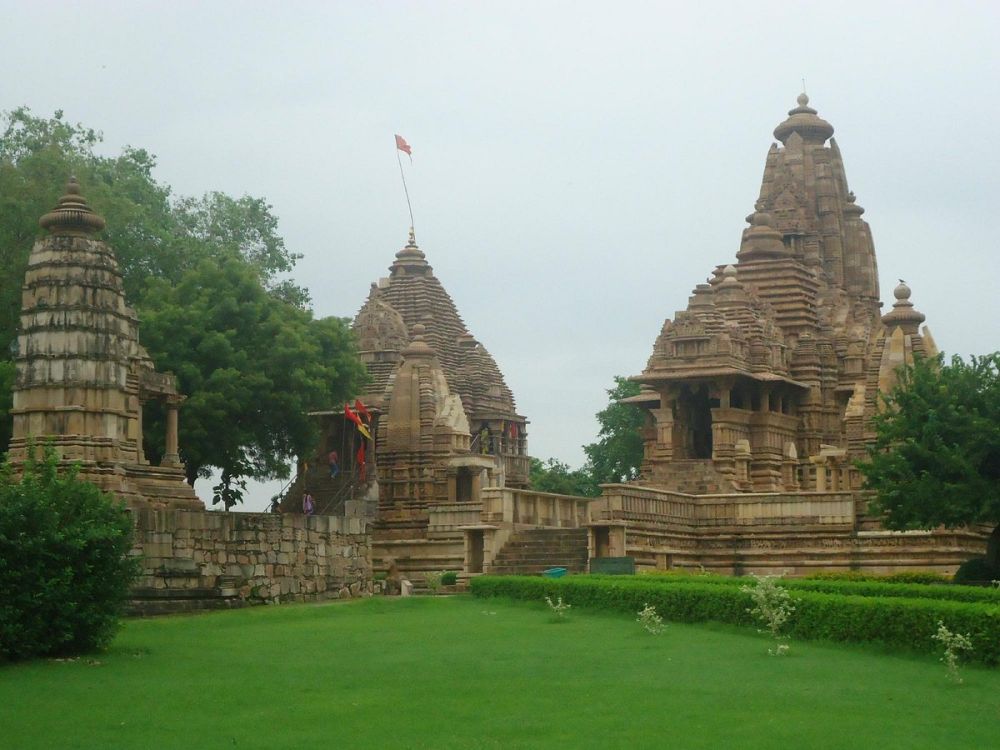

The Matangeshvara Temple is a significant part of the renowned temple group of Khajuraho located in the state of Madhya Pradesh, India. Khajuraho's temples were built during the reign of the Chandela dynasty, which rose to prominence in central India between the 10th and 13th centuries. Dedicated to Lord Shiva, the Matangeshvara Temple stands out for being an active site of worship, unlike the other temples at the site which are not used for regular worship.
The history of tourism in Khajuraho, including the Matangeshvara Temple, began in earnest when the complex was listed as a UNESCO World Heritage Site in 1986. Though known locally, it wasn't until this designation that the temples received international attention, causing a significant increase in visitor numbers.
The Matangeshvara Temple, constructed in the early 10th century, is a fine example of the Nagara style of architecture, which is characterized by its beehive-shaped shikhara (spire). While less ornate than some of its neighboring temples, it is famed for housing an eight-foot-tall lingam, one of the largest such representations of Lord Shiva in northern India.
In recent times, tourism trends show an increasing interest in experiential and immersive travel. Visitors to Khajuraho, and the Matangeshvara Temple in particular, often engage in comprehensive tours that explore the extensive carvings and intricate details of the temple's architecture. Moreover, technology has played a pivotal role in enhancing the visitor experience through virtual guides and augmented reality applications that provide deeper insights into the history and cultural significance of the site.
Another trend is the rise of cultural and festival tourism. The Khajuraho Dance Festival, a week-long event held annually, attracts enthusiasts from around the globe. While immersing themselves in classical Indian dance performances, visitors also get to experience the temples, including the Matangeshvara Temple, in a unique cultural context.
Preservation efforts by both government and international agencies have led to the development of sustainable tourism practices around the Khajuraho temple complex. These efforts aim to maintain the integrity of the site while ensuring that the influx of tourists does not negatively impact the area. Tourists are encouraged to respect the sanctity of the Matangeshvara Temple, given its status as a place of ongoing worship.
As one of the ancient landmarks within Khajuraho, the Matangeshvara Temple continues to be a beacon of history, attracting scholars and devotees alike. Its ongoing religious significance, combined with the splendor of Chandela architectural artistry, cements its place as a must-visit destination for tourists exploring India's rich cultural tapestry.